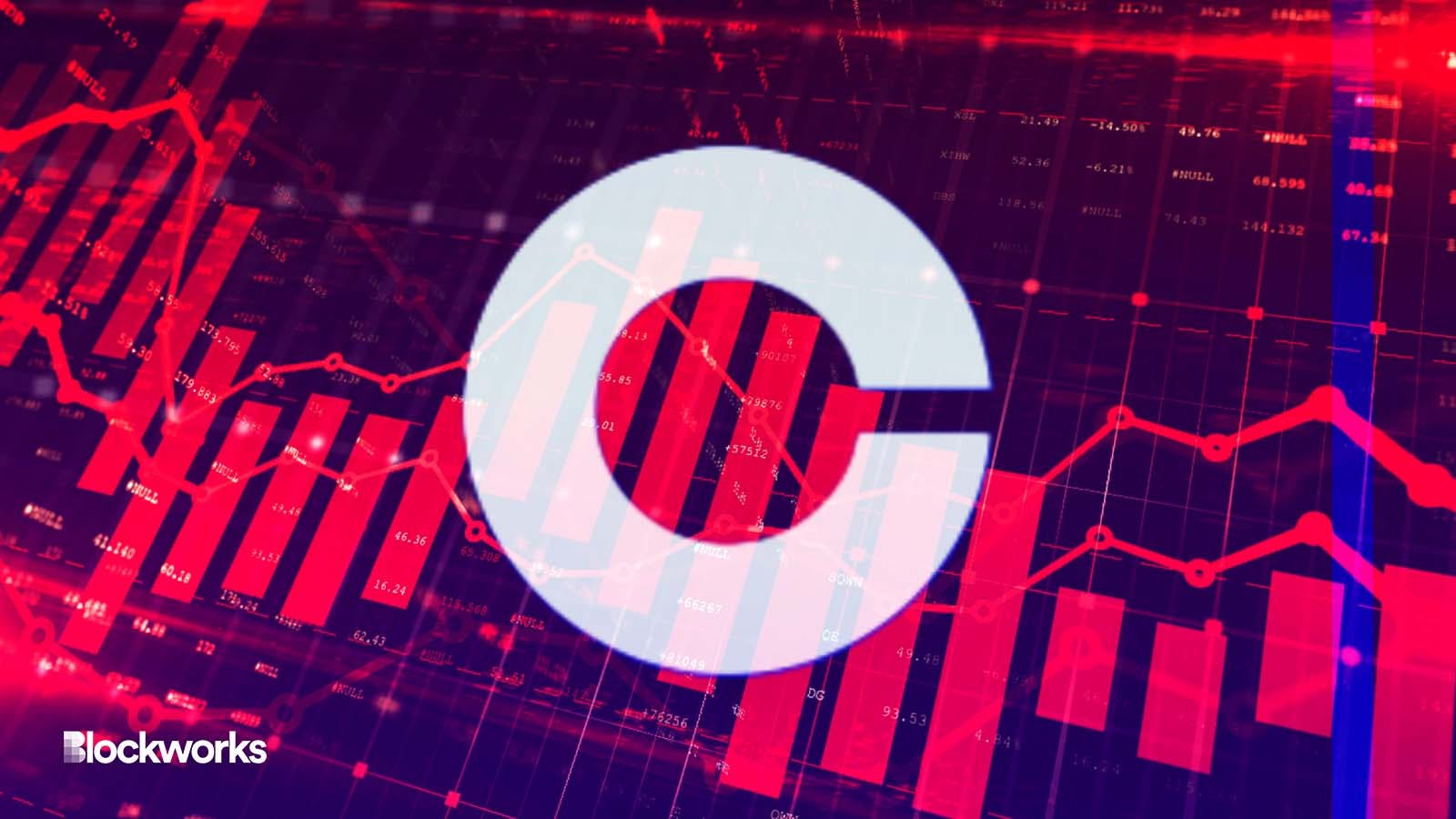US Agencies Keep ‘Protecting Investors’ — And Tanking Coinbase Stock
Coinbase stock has been incredibly sensitive to regulatory threats, with this week’s Wells notice no different

Adam Vilimek/Shutterstock modified by Blockworks
The SEC is back on Coinbase’s case and posturing to sue, sending the top US crypto exchange’s stock tumbling up to 20% this week.
It’s the third time Coinbase shares have tanked directly following actions taken by US regulators since Sept. 2021.
If you count last month’s SEC settlement with Kraken over yield-bearing, staking-as-a-service products (which Coinbase also offers), it makes four.
Coinbase’s share price dropped 12% on the same day as the Kraken settlement announcement, tumbled further to nearly 22%, before rebounding completely — all within a few days of trade.
Coinbase’s first Wells notice, issued in the second half of 2021 over its proposed plan to pay up to 4% interest on USDC deposits, appears to have had a more sustained effect.
Blockworks mapped major relevant regulatory actions against Coinbase’s stock price for up to one month following.
The firm’s share price dropped around 4% on the day it disclosed the Wells notice (which it had received in the week earlier). Those losses had doubled by the close of the next trading session, before reaching 19% down three weeks later.
COIN dropped even harder last year when the Department of Justice filed charges against a former product manager in July 2022, over an insider trading ring that netted $1.5 million.
Back then, the stock sank 30% over the four following days, from above $75 to as low as $53. Still, it rebounded completely over the next few sessions — and then some, hitting $100 three weeks later.
As for this week’s Wells notice, Coinbase stock is now down 12.3% since just before its disclosure, similar to losses felt after Kraken’s settlement.
Billions wiped from Coinbase market value after SEC threats
Coinbase saw up to $11.3 billion wiped from its market capitalization in the month following 2021’s Wells notice, ahead of the $5 billion and $3.3 billion after the insider trading and Kraken reports.
So far, Coinbase has lost up to $2.3 billion from its valuation since its most recent SEC threat.
Of course, it’s tough to prove direct causation outside of the price collapses that have occurred on the same day.
Bitcoin price drops of up to 35% also happened in the 30 days following these regulatory actions, and Coinbase stock is often highly correlated with BTC markets.
Bitcoin’s performance is based on a myriad of external factors, arguably more influential than threats against a centralized public company like Coinbase.
But at least in the short term, agencies like the SEC surely aren’t helping Coinbase shareholders.
Get the news in your inbox. Explore Blockworks newsletters:
- The Breakdown: Decoding crypto and the markets. Daily.
- Empire: Crypto news and analysis to start your day.
- Forward Guidance: The intersection of crypto, macro and policy.
- 0xResearch: Alpha directly in your inbox.
- Lightspeed: All things Solana.
- The Drop: Apps, games, memes and more.
- Supply Shock: Bitcoin, bitcoin, bitcoin.






